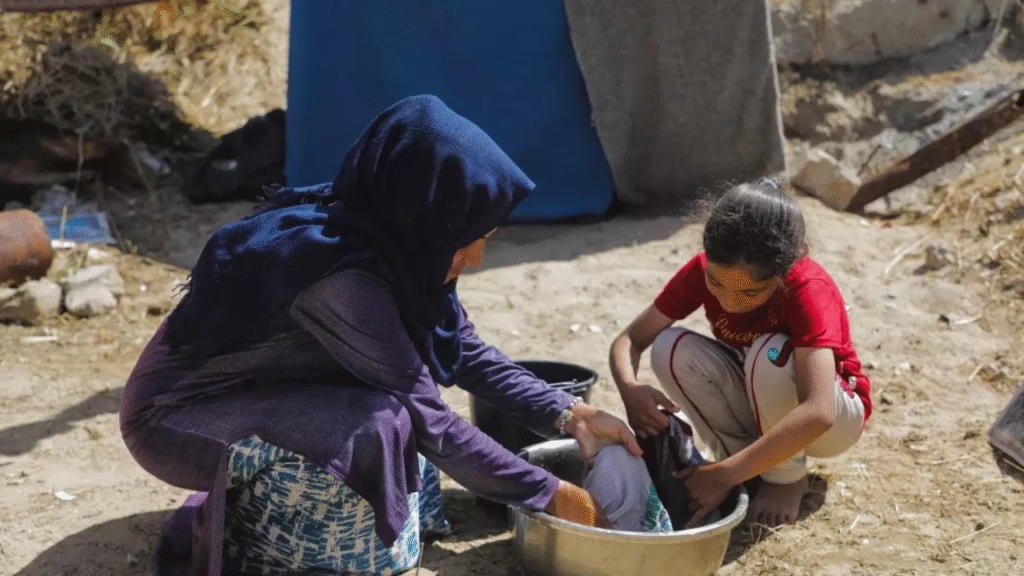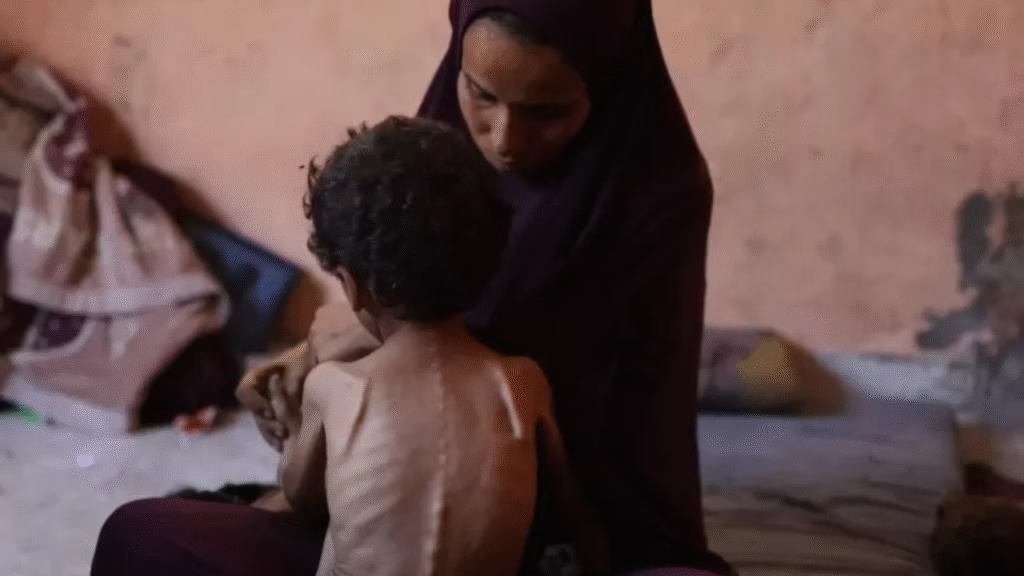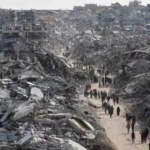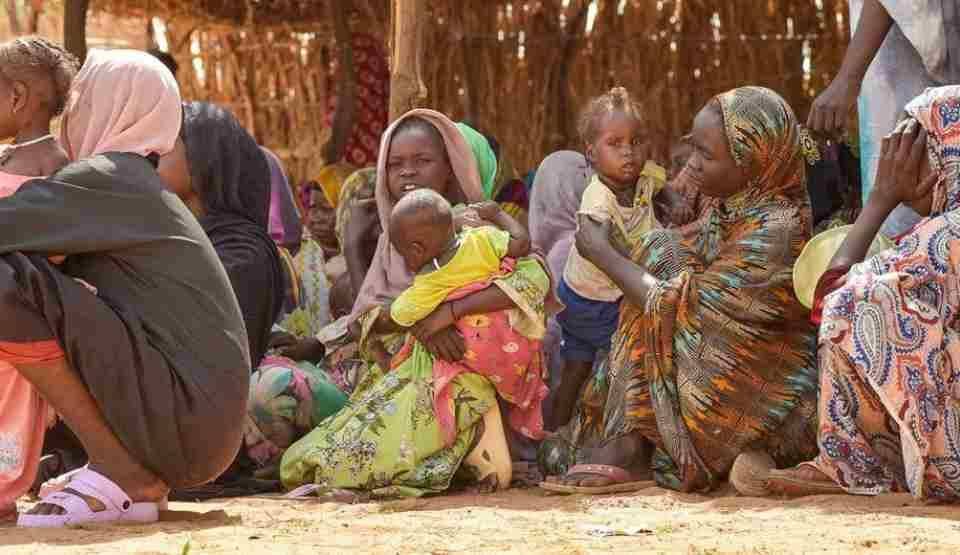Catastrophic hunger crisis marks first famine declaration outside Africa, as aid agencies struggle against restrictions
Gaza City – In an unprecedented humanitarian crisis, the United Nations has officially declared a famine in Gaza City, marking the first time such a classification has been made outside the African continent. The declaration puts approximately 500,000 Palestinians at immediate risk of death by starvation.
The UN-backed Integrated Food Security Phase Classification (IPC), recognized as the world’s leading authority on hunger assessment, characterized the situation as “catastrophic,” with starvation, destitution, and death now defining daily life for residents. The crisis has reached such severity that one in three children in the area suffers from acute malnutrition.

Ground Reality Reveals Devastating Impact
Tess Ingram, UNICEF spokesperson currently stationed in Gaza City, witnessed firsthand the compound crisis facing the population. During visits to three hospitals, she encountered rooms filled with injured children bearing amputations, blast injuries, fractures, and multiple shrapnel wounds.
“It is among the worst that I’ve seen,” Ingram reported, describing the medical facilities as overwhelmed with casualties while simultaneously treating malnourished children. At a screening center she visited, nearly every child examined showed signs of malnutrition.
The human cost becomes clear through individual stories. Sara, a 14-year-old resident, told Ingram matter-of-factly: “Famine, of course, I know. I’ve been starving for five months now.” Her words reflect a grim reality that has become normalized for Gaza’s population, nearly half of whom are children.

Conservative Assessment Carries Weight
The IPC’s famine declaration carries particular significance due to the organization’s conservative approach to such classifications. Composed of independent technical experts who analyze food insecurity data globally, the IPC has been monitoring Gaza’s deteriorating situation since first warning of famine risk in December 2023.
Their Friday declaration came backed by 50 pages of evidence and warns that the famine will likely spread rapidly to Deir al-Balah and Khan Younis unless immediate action is taken. The classification represents a rare and severe finding for the organization, which conducts similar assessments across crisis zones including Somalia, Sudan, and South Sudan.
Aid Distribution Faces Multiple Barriers
Despite hundreds of trucks loaded with lifesaving supplies waiting outside Gaza’s borders, humanitarian organizations face systematic obstacles in delivering aid. UNICEF and over 200 other NGOs have refused to participate in the newly established Gaza Humanitarian Foundation model, citing violations of humanitarian principles of impartiality and neutrality.
The current aid distribution system has created what Ingram describes as “apocalyptic scenes” at just four distribution sites, where desperate civilians rush for supplies and face gunfire in the process. This contrasts sharply with the 400 safe distribution points that operated during previous ceasefires, allowing aid workers to deliver supplies “with safety and with dignity.”
Logistical Nightmare Hampers Relief Efforts
Even when trucks manage to cross into Gaza, the delivery process has become a logistical nightmare. Aid workers must request permission for each collection mission from crossing points, often waiting up to 20 hours for round trips that should take minutes. Teams face designated routes that may be unsafe or compromised by armed criminal groups attempting to loot supplies.
“We can’t just go there whenever we like to collect the supplies,” Ingram explained, describing a system where humanitarian workers must receive “green light” permissions for basic operations. The inefficiency creates deadly delays while critical medical equipment for hospitals sits in warehouses just kilometers away.
Official Responses Draw Sharp Criticism
Israeli Prime Minister Netanyahu’s dismissal of the IPC famine report as an “outright lie” has drawn strong criticism from humanitarian workers on the ground. Ingram characterized this response as disrespectful to international experts and Gaza residents, noting the contradiction between denial and the simultaneous restriction of international journalists who could verify conditions.
“To be having this conversation about whether or not it is true, while children are dying, it’s like we’re living in an alternate universe,” she stated, emphasizing that ground-level humanitarian workers witness children dying daily from malnutrition.
Gaza City Faces Existential Threat
Adding to the crisis, Israeli defense officials have pledged to level Gaza City unless a ceasefire agreement emerges. The city houses nearly one million residents, with children comprising half the population. These children have already endured almost two years of conflict, leaving them exhausted, traumatized, and now starving.
Medical professionals in Gaza City hospitals face impossible decisions about potential evacuation scenarios, uncertain how they would move incubators with babies or children connected to life-support equipment. The prospect of forced displacement to the south offers little relief, as conditions there are similarly inadequate.
Healthcare Access Increasingly Restricted
The humanitarian crisis is compounded by increasing restrictions on international medical personnel. Several NGOs face potential deregistration in coming weeks, with their international staff potentially barred from entering Gaza. This development threatens to further cripple medical services at a time when hospitals overflow with casualties and malnourished children.
Call for Immediate Action
Humanitarian organizations maintain that solutions exist but require political will to implement. They call for unrestricted access to collection points, multiple safe routes within Gaza, and dramatically increased truck allowances. Flooding Gaza with aid, they argue, would both reach more people and reduce desperation-driven looting.
The famine declaration represents a critical moment for international response. As Ingram emphasized, world leaders must use this classification as a catalyst for action, allowing humanitarian organizations to perform their essential work without the systematic obstacles that currently prevent lifesaving aid from reaching Gaza’s most vulnerable residents.
The crisis in Gaza City stands as a stark reminder of how quickly humanitarian situations can deteriorate when access restrictions combine with ongoing conflict, creating conditions that have now met the technical definition of famine for the first time outside Africa.






